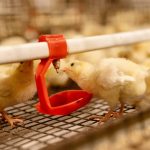The concept of vertical farming marks a paradigm shift in the way we perceive food production. As urban areas continue to expand, traditional farming practices are becoming less practical. To meet the demand for food in our cities, we need to explore innovative agricultural systems – one of which is vertical farming. This article aims to explore how vertical farming can contribute to the UK’s urban food security.
The Concept of Vertical Farming
Vertical farming is a modern take on agriculture that involves growing plants in multiple layers, usually in a controlled environment. This type of farming system can be set up in any urban structure like warehouses and skyscrapers, and it doesn’t require extensive land or water resources like traditional farming.
Lire également : What Strategies Can Help UK Families Navigate Digital Learning Challenges?
This revolutionary approach shifts the production of food from the rural to the urban setting, making it an attractive proposition for cities where space is a premium. Vertical farms use advanced technology to control factors like light, temperature, and humidity, ensuring optimal plant growth throughout the year. This system also allows for the cultivation of a variety of plants, from leafy greens to fruits and vegetables.
Vertical Farming and Food Security
In the face of increasing population and shrinking arable land, food security has become a pressing issue. This is where vertical farming comes into the picture. As an innovative farming method, it holds the potential to boost the UK’s food production while ensuring the efficient use of resources.
Dans le meme genre : How to Craft Compelling Historical Fiction Based on UK’s Rich Heritage?
Vertical farms, being located within cities, provide fresh produce at the doorstep of urban consumers. This reduces the need for long-distance transportation, thereby saving energy and reducing carbon emissions. More importantly, these farms can produce crops year-round, irrespective of the weather conditions, making them a reliable source of fresh produce for city dwellers.
Moreover, vertical farming is a closed-loop system that significantly reduces the amount of water required for cultivation. Most vertical farms recycle the water used, resulting in up to 95% less water usage compared to traditional farms. This could prove to be a game-changer in areas where water scarcity is an issue.
Impact on Urban Areas
The impact of vertical farming extends beyond merely securing food supply. It has the potential to reshape urban landscapes and contribute to the sustainability of cities. By converting urban structures into productive farms, we can not only reduce the pressure on rural lands but also contribute to the greening of our cities.
Vertical farms also offer the benefits of reduced food miles and lower transportation cost. The close proximity of these farms to consumers ensures that food is fresher, thereby improving the overall quality of urban diets. In addition, the localisation of food production can help create jobs and stimulate economic growth in urban areas.
Energy Efficiency and Sustainability
A key feature of vertical farms is their energy efficiency. The use of LED lights for growing plants allows for precision in light management, thereby reducing energy wastage. These lights can be adjusted to provide the exact spectrum of light needed by the plants, ensuring optimal growth while saving energy.
Efficient temperature and humidity control further add to the energy efficiency of vertical farms. These indoor farms are insulated from external weather conditions, meaning they require less energy for heating or cooling compared to traditional greenhouses.
In addition, vertical farming can contribute to sustainability by recycling waste. The waste produced by the plants can be composted and utilised as organic fertiliser, closing the loop of the agricultural process within the city itself.
Overcoming Challenges
While vertical farming holds immense potential, it is not without challenges. High setup and operational costs, lack of awareness, and the need for skilled workforce are some of the hurdles faced by this emerging sector. However, with the right policies and support from the government, these challenges can be overcome.
The UK government can play a significant role in promoting vertical farming by providing subsidies and incentives. It can also facilitate research and development in this field to further improve the efficiency and productivity of vertical farming systems.
While we’re still in the early days of vertical farming, it’s clear that this innovative approach to food production has the potential to play a significant role in achieving food security in urban areas. It is a promising solution to the growing issue of feeding our expanding cities. The future of farming may very well be vertical, and the sky is the limit.
Role of Technology in Enhancing Vertical Farming
Technology plays a pivotal role in the domain of vertical farming, making it a practical and efficient solution for urban food production. From LED lights to automated systems, technology helps optimise plant growth while minimising resource usage.
In vertical farms, LED lights are used to provide the exact spectrum of light needed by the plants. These lights are far more energy-efficient than traditional lighting systems and can be adjusted to provide light in the ideal spectrum for different plant species. This precision in light management helps in maximising plant growth while conserving energy.
Moreover, technology enables the automation of various farming tasks, including watering, fertilising, and harvesting. Automated systems ensure that plants receive just the right amount of water and nutrients, reducing waste and improving efficiency.
The use of sensors and data analytics in vertical farming is also noteworthy. Sensors can monitor various environmental factors such as temperature, humidity, and light intensity, allowing for real-time adjustments. Data analytics, on the other hand, helps in forecasting yield, detecting plant diseases, and optimising farm operations.
Moreover, vertical farms can harness renewable energy sources to further reduce their carbon footprint. Solar panels installed on the rooftops of these farms can generate clean, renewable energy to power the farm operations, making vertical farming a part of the solution to climate change.
Conclusion: Vertical Farming – A Future-Proof Solution
In the face of growing urbanisation and climate change, achieving food security is a complex challenge. However, vertical farming presents a promising solution. With its ability to produce food within city limits, reduce carbon emissions, conserve water, and create urban jobs, vertical farming could be the key to sustainable urban development.
Vertical farming transcends the limitations of traditional farming, offering the possibility of year-round food production in a controlled environment. By bringing food production to the heart of our cities, this farming method can make urban areas more self-sufficient while improving the overall quality of urban diets.
The UK, being a frontrunner in technology and innovation, is ideally positioned to champion this shift towards vertical farming. With the right investments, research and policy support, the UK can leverage vertical farming to strengthen its food system and create a model for other countries to follow.
While vertical farming is still a relatively new concept, the potential it holds is enormous. As technology continues to advance and the benefits of vertical farming become increasingly evident, it is likely that more and more cities around the world will embrace this modern approach to agriculture. As we look towards the future, it’s clear – the future of farming is here, and it’s vertical.
















